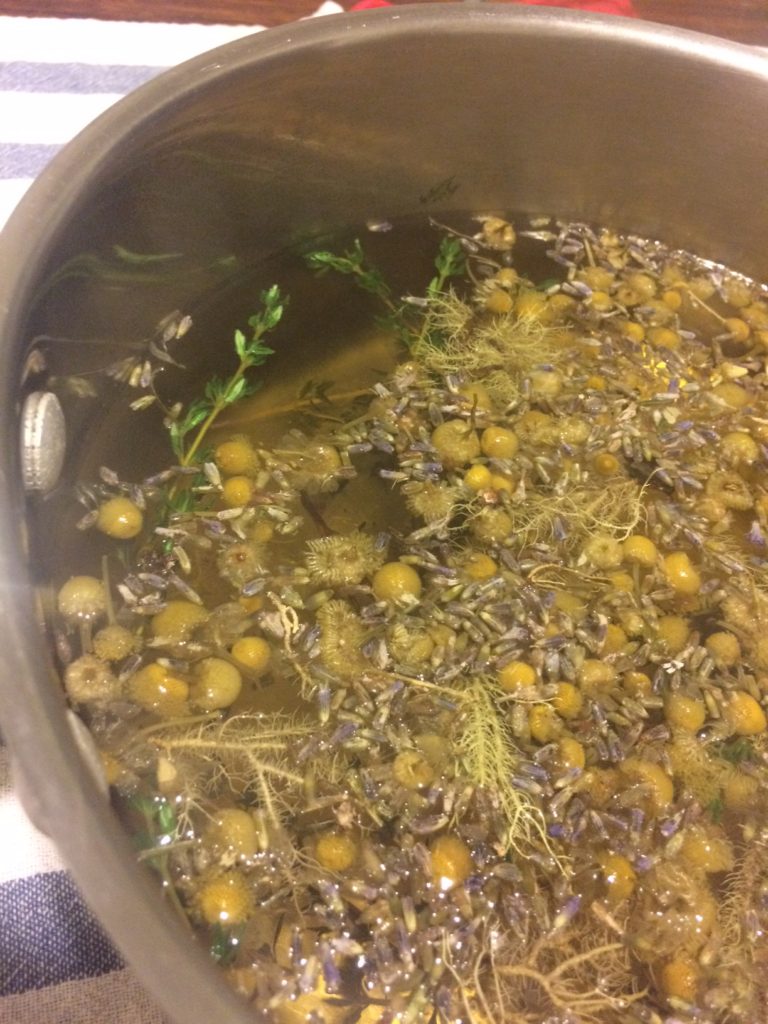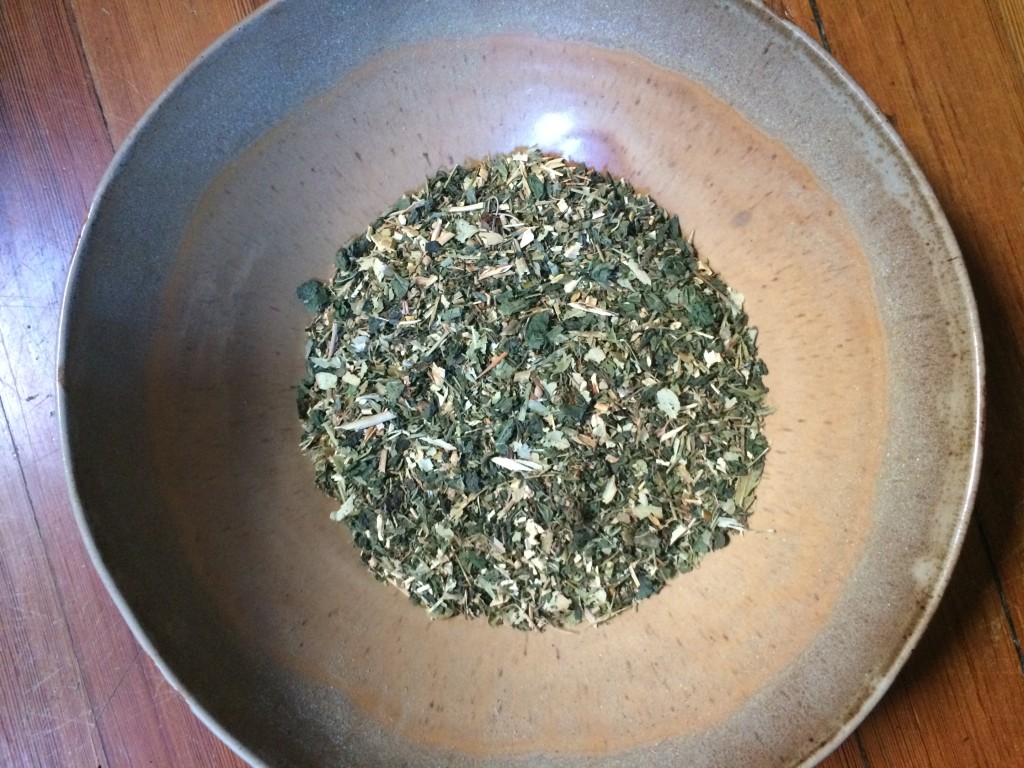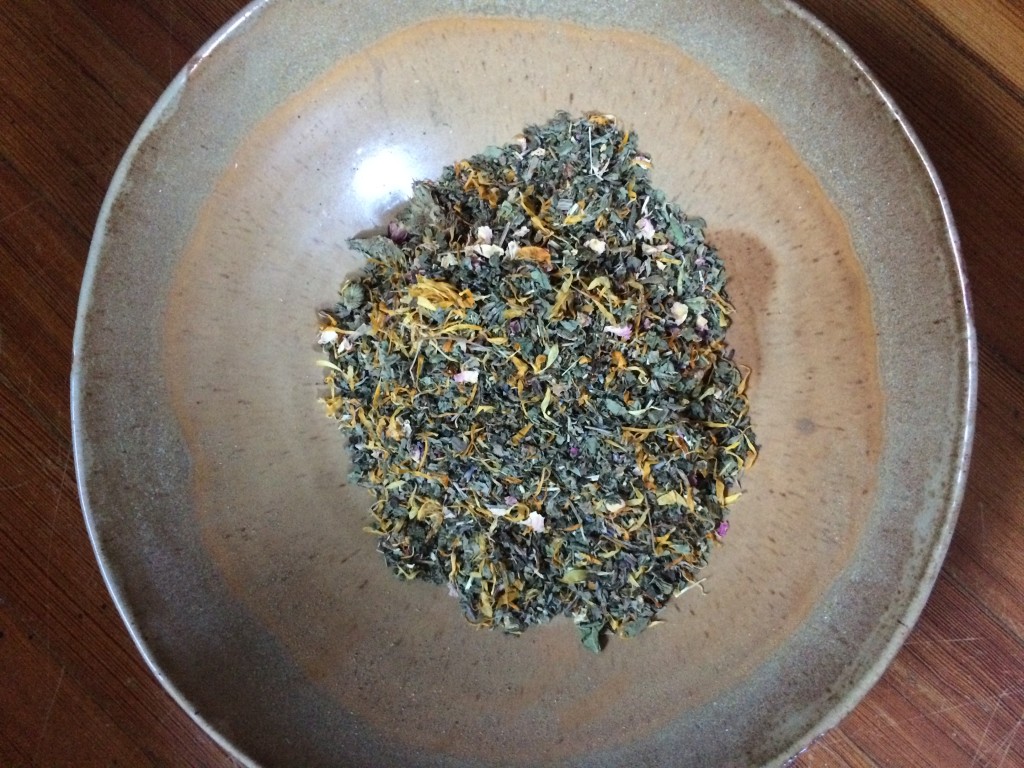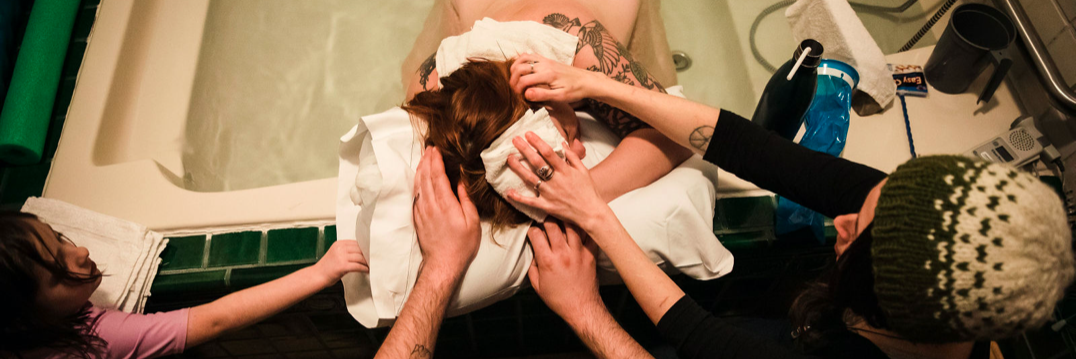Herbalism and Herbalist Resources
Herbalism and Herbalists
Local gem Bellx of Semilla of Ixchel offers full-spectrum reproductive support, herbal wisdom and customized preparations, and herbalism apprenticeships for People of Color in greater Boston. Offerings include an herbal CSA, placenta medicine, and workshops about holistic healing.
Muddy River Herbals is the project of Jenny Hauf and her husband Matt. They grow and wildcraft local, organic herbs for folks in the Boston area, and can be found at the Roslindale and Melrose Farmers Markets. Much of the calendula in my postpartum sitz baths comes from these guys!
While not local to the northeast, La Loba Loca is an incredible herbalist and friend who offers consultations, workshops, skillshares, knowledge shares, and seedlingships.
Clair Moore is a clinically trained herbalist and professional private chef who provides medicinal food preparation services around Boston, especially allergen-free foods for folks with autoimmune diseases or chronic illnesses. She and Amanda of The Willow Witch have also teamed up to create Willow Provisions, a medicinal herbal food supper club.
Herbstalk is a growing community of herbal classes in the Boston area. Based in Somerville, this yearly conference brings together folks from many herbal traditions every June.
Founded by Katja Swift and Ryn Midura, the CommonWealth Center for Holistic Herbalism in Brookline offers classes, apprenticeships and a clinic for low-income folks who seek herbal care.
Tammi Sweet at the Heartstone Center for Earth Essentials teaches an AMAZING anatomy & physiology class for holistically-minded folks who would otherwise shy away from a science-heavy class. She frequently offers free webinars on a variety of topics from allergies and asthma to the endocannabinoid system.
A Midsummer Cold’s Steam
In an unusual turn of events, I came down with a summer cold in late July. This summer, I had intentionally planned a gap in due dates so I could take some time off, and this well-timed immune dip occurred before I had to attend any labors. Thank goodness.
The cold was tricky for me to kick, however. I rested and drank broth and elderberry tea all day. One of the factors in my slowed ability to fight this cold is my hypothyroid (which approximately ten million Americans also have). Having a slow thyroid makes me run cold, and it’s tricky for my body to build an appropriate fever to kill pathogens. I also tend to be super dry – and this cold definitely exacerbated that for me. When the body produces mucous, it’s actually healing itself. It’s a way your body expels the gunk that’s making you sick. It’s why an herbalist, for a dry cough, may recommend something like mullein (a strong expectorant) rather than cherry bark (a spasmodic cough soother).
I knew what I needed was wet heat. A steam is a way of bringing the medicinal qualities of plants directly to the tissues affected by a cold (mucous membranes in nose, throat, mouth, lungs). After a few days of these steams, I’d kicked the dry cough and was able to move on from my cold.
 Included in my steam is fresh thyme from the front porch. Aromatic culinary herbs are very effective as antimicrobial and antibacterial agents. The essential oils come out with heat and perfume the air. I also included some usnea, from my friend’s land in Cape Cod. Usnea is a lichen (algae/fungus combo) that grows on trees in woodsy/seaside/oceany places. It’s known to have herbal antibiotic action, and is especially useful for mucous membranes (such as lungs, sinus, or urinary tract). Its constituent, usnic acid, is one of the more studied herbal extracts because it inhibits gram positive bacteria metabolism, making it potentially affective against tuberculosis, staphylococcus, streptococcus, and pneumococcus.
Included in my steam is fresh thyme from the front porch. Aromatic culinary herbs are very effective as antimicrobial and antibacterial agents. The essential oils come out with heat and perfume the air. I also included some usnea, from my friend’s land in Cape Cod. Usnea is a lichen (algae/fungus combo) that grows on trees in woodsy/seaside/oceany places. It’s known to have herbal antibiotic action, and is especially useful for mucous membranes (such as lungs, sinus, or urinary tract). Its constituent, usnic acid, is one of the more studied herbal extracts because it inhibits gram positive bacteria metabolism, making it potentially affective against tuberculosis, staphylococcus, streptococcus, and pneumococcus.
After a few days of thyme and usnea steams, I added in another before bedtime and focused on gently soothing/relaxing herbs. Pictured here – I added chamomile and lavender flowers. Lavender, like thyme, is also very aromatic and its essential oil has antibacterial action. Chamomile, while gently relaxing, also has some antispasmodic action (mostly when drunk as tea). It’s especially nice to add these if a dry cough (or any cold symptom, really) is keeping you awake at night. Quality sleep is important to healing! Remember: some folks are allergic to chamomile, so it’s not for everyone.
To prepare a steam:
- Heat a pot of water to boil and set yourself up a comfortable spot in the meantime. You’ll probably want a hanky or some tissues handy!
- Grab a towel, and place the herbs in a separate bowl. Because essential oils of herbs can dissipate quickly with heat, it is important to add the herbs to the hot water when you’re ready to breathe them in deeply.
- Once the water is boiling, place the pot in your comfy spot, tent a towel over your head with the steaming water underneath, and add your herbs.
- Breathe deeply, using both nose and mouth and focus on the scents of the herbs. Bring them in to your lungs. Come up for cooler breaths if you need to, but you’ll notice the steam making your nose run and your dry cough more productive.
- After about 15 minutes, the scent of the steam may not be as strong. You’ve absorbed the most medicinal parts – yay!
Steams can also be very kid-friendly, and herbs can be customized depending on the particular manifestation of an illness. To make a kid-friendly steam, build a blanket fort and read stories with a flash light in the fort with your steam water nearby, perfuming the area. This way, the direct heat of the steam won’t be too intense, and a kid is more likely to sit in one place for the duration!
Herbal Aid for Fertility Support
Herbal Aid for Conscious Conception. CommonWealth Center for Holistic Herbalism in Brookline, MA.
With our culture’s strong focus on birth control and avoiding pregnancy, many people are left in the dark when they actually WANT to become pregnant! With the trend toward older ages for first-time parents (especially around Boston), many are wondering how to prepare their bodies best for parenthood. Why does it seem like everybody has babies so easily while others struggle for years, considering invasive fertility treatments? What does it even feel like to ovulate?
Come learn how to lay the groundwork for healthy fertility cycles, nourish your gametes and give yourself the best chance to have a healthy baby with the help of medicinal herbs and foods. This class is taught from the perspective of a birth doula who has years of experience helping parents (of many ages) have babies around Boston, MA.
Wednesday, January 20th, 2016
7:00pm – 9:00pm
25 St. Mary’s Court, Brookline
The fee for this class is $20. RSVP at this link.
Herbs for a postpartum birthparent!
I frequently make up batches of nourishing galactagogue herbal tea blends for postpartum clients. Galactagogue is a kooky herbalist term for plants that encourage the production of breast milk. My most recent batch was this:

It contains goat’s rue, nettle, linden (leaf and flower), marshmallow (root), moringa and fenugreek. Should be steeped overnight (or however long you can manage, because really, whatever you manage to do postpartum is appropriate!). Maximum mineral extraction happens the longer the tea is steeped, and the cooled water allows the mucilaginous components of both the linden and marshmallow to come through. These are extra moistening, and extra soothing to frayed nerves of under-slept new parents. Many folks rely on herbs to support nursing, and this blend is much stronger and more effective than its grocery store counterpart. I had a client exclusively breastfeeding her twin boys with the help of a blend like this!
I also made this new mom an herbal postpartum sitz bath:

This recipe includes plantain and comfrey leaves, calendula blossoms, rose petals, lavender flowers and yarrow. I love making these baths because the calendula, rose and lavender give it such beautiful color. Plantain contains the tissue proliferant allantoin, which gently encourages skin to heal (especially nice if stitches were needed). Other herbs encourage healing (yarrow), are antimicrobial (lavender), and gently astringent to tighten and tonify tissue back to its comfortable state. These herbs can be steeped for 20 minutes, like a tea, strained well, and added to a sitz bath or used in a peri-rinse bottle.
My ceramic herb mixing bowl is a product of Liz Kinder pottery. I used to sell her pots when I worked at Wild Indigo Boutique in Boston’s South End.
Herbs for Pregnancy and Birth Workers
Herbs for Pregnancy and Birthworkers
Wednesday, September 16 2015, 7-9pm. $20 (or a donation to the Boston Doula Project)
At the CommonWealth Center for Holistic Herbalism in Brookline, MA
Are you pregnant, or hoping to be, and wondering how to safely and effectively use herbal remedies? Do you work around pregnancy and wish you knew what types of alternatives are good to suggest? Many folks approach midwives, lactation consultants, and doulas for insight on pregnancy and postpartum support herbs. This class, taught by a professional birth doula and herbalist, will help clarify some myths about herbs in pregnancy. (Wait–did Baby Center really just say nettle could cause a miscarriage?) We’ll cover the basics from nourishing uterine tonics and postpartum sitz baths to self-care herbs for birthworkers.
To register, check out the CommonWealth Center website.
As I prepare for my class for Pregnancy and Birth Workers tonight at the CommonWealth Center for Holistic Herbalism, I am looking at my list of materia medica. Some herbs I hope to go over tonight have been previously mentioned in this post. Others, I hope to add to the list as time goes on.
Calendula (Calendula officinalis) – this soothing, lymphatic support herb is great when added to a postpartum sitz bath. I love to use calendula oil on backed-up lymph (like in my neck/behind my ears when I’m getting a cold), or to sooth my belly when I’m feeling bloated.
Goat’s Rue (Galega officinalis) – has been used to support milk production since dairy farmers noticed their goats increased output from eating this common meadow weed. A great breastfeeding herb, and contains chromium, which is a trace mineral helpful for glucose metabolism and curbing sugar cravings!
Marshmallow (Althea officinalis) – a moistening and soothing plant. Cold brew of the root is how you get the most mucilage (nourishing long-chain polysaccharides). I always add a pinch to long-steep lactation tea.
Moringa (Moringa oleifera) – a plant not-at-all native to New England, but often used by nursing mothers in the product “GoLacta”. My opinion is that almost any herb taken in a tea form will be more effective (as many have milk supply issues from simply being dehydrated). Morninga is much cheaper in loose-leaf tea than in the marketed capsules, also.
Milk Thistle (Silybum marianum) – a gentle, trustworthy liver-support herb. Often seen in “mother’s milk” tea blends, but the best way to take the herb is in capsules of the ground up seed. Historically used for nursing support, my theory is this plant supports lactation by helping the liver process the hormonal dump of postpartum reality (cortisol, anyone?)
Plantain (Plantago officinalis) – an edible local weed. Used to soothe bee stings and rashes, support kidneys and heal guts. I always add a little to my postpartum sitz baths.
Materia Medica for Midwives
This was compiled for a class on the use of herbs for pregnancy, labor, postpartum and nursing for a group of professionals on the North Shore in June 2014.
Burdock (Articum lappa)– bitter, Encapsulation: cooling, liver support. Helpful for dry, itchy skin and eczema (though you must identify underlying issue) Safe for use in pregnancy. Eat as food or drink as tea. Prebiotic, contains inulin fibers that feed “good” gut bacteria.
Catnip (Nepeta cataria) – gentle, realaxing herb to calm anxiety, cool heartburn, rest those with insomnia and also useful in quelling nausea. Do not use if ragweed/daisy family allergy.
Chamomile (Matricaria chamomilla) – gentle, anti-nausea, especially when triggered by stress and anxiety. Good for cheap jerseys from China calm tea before bedtime. Stronger infusions make stronger Life antispasmodic properties for muscle cramping. Avoid in case of ragweed/daisy family allergy.
Crampbark (Viburnum opulus)– Antispasmodic for smooth muscle, such as the uterus. Can be used to alleviate menstrual cramps or potentially avoid threatened miscarriage in early pregnancy. High tannin content astringes and slows heavy bleeding.
Dandelion (Taraxacum off.) – mineral-rich, diuretic, useful for UTIs. Bitter flavor supports digestion (can be drunk as tea or eaten as food). Useful for pregnancy-induced hypertension because it drains edema without stripping body of minerals. Root of plant helps make iron more bioavailable, so great for anemics. Roasted roots taste pleasantly of coffee, but are not nearly as harsh on the system.
Dong Quai (Angelica sinensis)– Well-known uterine tonic. Can strengthen contractions but also its volitale oils can have a relaxing effect on the uterus. cheap nba jerseys (Think tea brewed with the top covered or left open). Not a good choice for wholesale nfl jerseys heavy bleeders, as it could increase bleeding.
Garlic (Allium sativum) – Useful for immune support during cold & flu when other drugs are undesirable. May cause strong taste in breastmilk, so be wary of overdoing it on if you’re nursing (only is a problem if infant doesn’t like taste and wont feed as often). Useful to boost immune before GBS test.
Ginger (Zingiber off.) – warming, stimulates blood flow to the pelvic area to alleviate blockages. Anti-nausea and safe for use during pregnancy. Antispasmodic properties can help alleviate menstrual cramps by relaxing smooth muscle (uterus)
Lady’s Mantle (Alchemilla mollis)– has sedative properties to alleviate cramps (contains salicylic acid). Alleviates excessively heavy flow, because of its high tannin content.
Lavender (Lavandula angustofolia) – drying, calming herb. Good for headaches, herbal baths. Antibacterial, essential oil can be added to massage oils (but not for hospital settings as many are scent-free).
Lemon Balm (Melissa off.) – cooling, relaxing herb that is safe for use during pregnancy. For HSV+, increase chance of vaginal birth by taking lemon balm tea in advance. Topically and internally helps fight viruses that attack the nerves, like herpes and HPV.
Nettle (Urtica dioica) – slightly cooling, drying. Diuretic, helpful for kidney issues, especially hypertension-induced edema. Useful to reduce proteinurea, overtaxed kidneys in pregnancy. Full of calcium, iron, and vitamin K: it’s food! Long cheap nba jerseys steep necessary to extract all minerals from the dried leaf. Absolutely necessary for vegetarians and anemics. Daily nettle replenishes magnesium, which Video relieves menstrual cramps.
Red Raspberry Leaf (Rubus spp.)– tonifying, mineral-rich plant with iron, calcium and magnesium. Long-steep tea. Much loved and recommended throughout pregnancy as SC a “uterine tonic.” Astringent, can stop excessive bleeding and calm intense cramping, lessen chances of postpartum hemorrhage.
Rose (Rosa rugosa)– Fruit of plant (rosehips) contain lots of vitamin C, which is useful in the winter months and have pleasant taste. Petals in tea or infused into massage oil make anyone feel special!
Shepherd’s Purse (Capsella bursa-pastoris)– well-known to stop hemorrhaging, either in childbirth or for heavy menses. Astringent, helpful for uterine prolapse (along with alignment exercises).
Yarrow (Achillea millefolium) – для Bitter, regulates flow of blood. Decreases heavy menstrual bleeding, especially combined with shepherd’s purse. Useful topically for wounds, so it’s great in a postpartum sitz bath. Also useful for fever.

